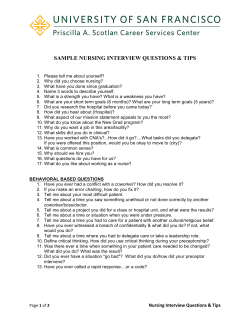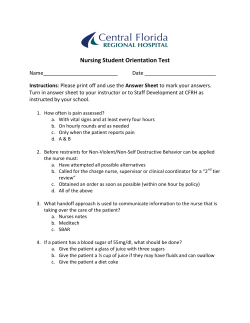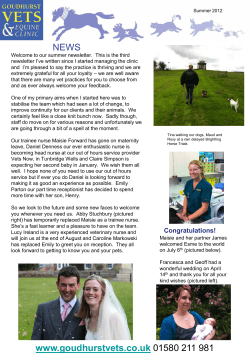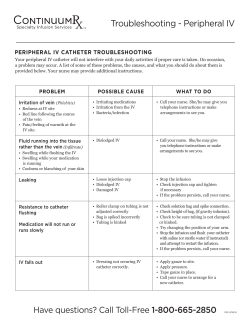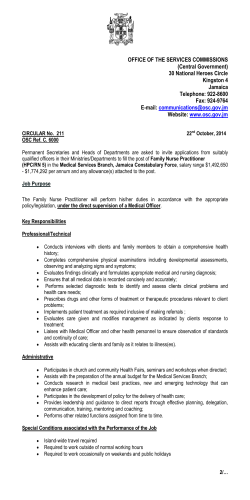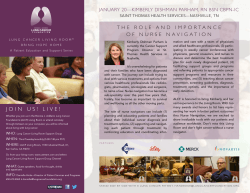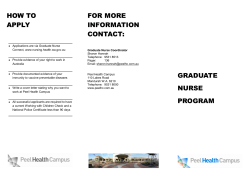
Review Gastrointestinal System Disorders Neurological/Neurosensory System Disorders
Review Gastrointestinal System Disorders Neurological/Neurosensory System Disorders Urinary System and Fluid electrolytes Disorders Musculoskeletal Disorders Hematological/Immunological Integumentary Disorders HIPPA Restraints Establishing goals Outcome Evaluations Math – PO, IVPB, IV- ml/hr, IV- gtt/min KVO, IV- gtt/min a. Increased metabolic rate b. High-solute tube feedings c. Side effects of medications d. Inability to perceive bowel cues a. Diarrhea b. Heartburn c. Gastric fullness d. Esophageal erosion a. b. c. d. Sleep with head of the bed raised 6 inch blocks. Take histamine receptor antagonist medication regularly. Eat small frequent bland meals . Lie down flat after eating. a. Nurse will measure client’s temperature. b. Nurse will monitor complaints of heartburn c. Nurse will monitor for return of gag reflex d. Nurse will give warm gargles for sore throat a. 1530 b. 1730 c. 1930 d. 2130 a. Advance age b. Overuse of laxatives c. Diet high in fiber and fluids d. Sedentary lifestyle a. The nurse will perform complete abdominal assessment. b. The nurse will take the client’s vital signs. c. The nurse will obtain a thorough history of the recent health status. d. The nurse will prepare to insert a nasogastric tube and test pH and occult blood. Deep slow respiration. b. Increased oxygen saturation. c. Respiratory rate of 16 bpm. d. Ashen gray color. a. a. Straining may precipitate incontinence. b. Straining may impair sphincter control. c. Straining can result to dysrhythmias. d. Straining may precipitate hemorrhoids. a. Applesauce b. Bananas c. Cheese d. Beans a. b. c. d. Bran Pasta Boiled Rice Low-fat cheese a. Sit up for two hours after eating. b. Eat only two large meals a day. c. Avoid drinking liquid during meal. d. Eat highly concentrated carbohydrate foods. a. 350 mg/dl and above b. 250 mg/dl and above c. 200 mg/dl and above d. 150 mg/dl and above a. Assist the client from the affected side. b. Assist the client from the unaffected side. c. Place personal items directly in front of the client. d. Discourage the client from scanning the environment. a. 3 inches to the front and side of the client’s toes. b. 8 inches to the front and side of the client’s toes. c. 15 inches to the front and side of the client’s toes. d. 20 inches to the front and side of the client’s toes. a. “ I should avoid walking on wet slippery floors. b. “ I’m not supposed to scratch the skin underneat the cast”. c. “ It’s OK to wipe dirt off the top of the cast with a damp cloth. d. If the cast gets wet, I can dry it with a hair dryer turn to the hottest setting”. a. Nurse will ask if the client exercises regularly . b. Nurse will ask if the client is currently a smoker. c. Nurse will ask if client eats low-cholesterol diet. d. Nurse will ask if client has taken oral contraceptives before. a. b. c. d. Milk. Liver. Apples. Carrots. a. The client is not adapting well to the disability. b. The problem is likely to get worse before it gets better”. c. The client is experiencing the usual sequela of a stroke. d. The client is experiencing side effects of prescribed anticoagulants. a. Teach female clients to wipe from the back to the front after urinating. b. Instruct the clients to use bath powder to absorb perineal perspiration. c. Advise client to report burning on urination to the physician. d. Encourage the patient to drink at least two quartz of fluid daily. a. b. c. c. “ I should douche before collecting the specimen”. “ I should cleanse the perineum from front to back” “ I should collect the urine in the cup as soon as I begin to urinate”. “ I can collect the specimen tonight and drop it off at the clinic in the morning. a. A deep ulcer that extends into muscle and bone. b. An area in which the top layer of skin is missing. c. A deep ulcer that extends into the dermis and the subcutaneous tissue. d. A reddened area that returns to normal skin color after 15 to 20 minutes of pressure relief. a. 25 year old client who has spina bipida and is wheelchair bound. b. 75 year old client who is bedfast with terminal COPD. c. 82 year old client post CVA with mild hemiplegia. d. 70 year old client following a total hip replacement. a. Serum albumin. b. White blood cells. c. Red blood cells. d. Serum potassium. a. Massaging directly over reddened area to help improve circulation. b. Positioning the HOB at a 45 degree angle to improve tissue perfusion. c. Using hot, soapy water to clean the client to remove fecal/urine incontinence. d. Repositioning a bedfast client at least every two hours to minimize pressure. a. Assessment of pressure ulcer status based on photographs accurately reflects the patient’s true pressure ulcer status. b. Use to assess the progress of decubitus ulcers that are diagnosed as stage 3 and stage 4. c. To identify the location of the pressure ulcer. d. Digital imaging of the pressure ulcer provides a visual record to avoid too much writing duirng documentation. a. Request low fiber diet. b. Increase fluids to 3 liter per day. c. Reposition every 4 to 6 hours. d. Check neurovascular status daily. a. b. c. d. e. f. Restrain the client’s extremities. Place the client in a supine position. Monitor and document post-seizure status. Place an oral airway between the client’s teeth. Note the time the seizure began and how it progressed. Remove any objects that could cause harm away from the client. a. 4 tablets b. 1 tablets c. 2 tablets d. 8 tablets a. b. c. d. Checks for airway patency. _____ Checks level of consciousness. ______ Counts the HR and determines the rhythm._____ Counts the rate and checks the quality of respirations._____ a. 0.75 ml b. 0.50 ml c. 7.5 ml d. 5.7 ml a. Monitoring the child’s intake and output daily. b. Providing oral hygiene especially care of the gums. Administering the medication 1 hour before food intake. d. Checking the child’s blood pressure before the administration of the medication. c. a. Bathe before eating breakfast. b. Sit for as many activities as possible. c. Stand in the shower instead of taking a bath. d. Group all task to be performed early in the morning. a. The left leg kept flat. b. Left leg elevated. c. The left leg in a dependent position. d. The left leg flexed under the other leg. a. “ I’m sure this won’t happen again.” b. “ Don’t worry, your family will help you.” c. “ I think you might need to go to a nursing home.” d. ‘You have concerns about the treatment for your condition?” a. Hypokalemia b. Hyperkalemia c. Hypocalcemia d. Hypercalcemia a. Yogurt b. Whole milk c. Powdered milk d. American cheese a. Raise the head of the bed. b. Loosen restrictive clothing. c. Remove the pillow and raise the padded side rails. d. Position the client on the side, if possible with the head flexed forward. a. Obtain a set of vital signs. b. Prepare to administer oxygen at 21%. c. Place the client in a high-fowler’s position. d. Obtain an IV cannula for starting an IV line. a. Colitis and ulcerated perirectal lesions. b. White plaques located on the oral mucosa. c. Opthalmic nerve involvement causing blindness. d. Fever, exertional dyspnea, and non-productive cough. a. Decrease pulse. b. Bibasilar crackles c. Dry mucous membranes. d. Increase blood pressure 1. 2. 3. 4. 5. 6. 7. Increase pulse and respiration. Weight loss Poor skin turgor. Dry mucous membrane. Concentrated urine with increased specific gravity. Increased hematocrit and Altered level of cocnsciousness. a. Be sure that the prescribed preoperative studies are performed. b. Instruct the client to avoid oral hygiene on the morning of surgery. c. Verify that the client has remined NPO for 24 hours before surgery. d. Report any increase in blood pressure on the day of the surgery to the physician. a. Provide supportive care. b. Provide small frequent meals. c. Offer food with low microbial content. d. Provide meals and snacks with high protein, high calorie, and high nutritional value. a. Hypoglycemia. b. Fluid overload. Urinary retention d. Gastrointestinal bleeding. c. a. Unilateral, raised, and bluish purple in color. b. Unilateral, red, raised, and resembling a blister. c. Bilateral, flat, and brownish and scaly in appearance. d. Bilateral flat, and pink, turning to dark violet or black in color. a. Capillary refill of 6 seconds. b. Palpable pulses distal to the cast. Blanching of the nail bed when depressed. d. Sensation where the area distal to the cast is pinched. c. a. b. c. d. Dry sterile dressing. Hydrocolloid dressing. Moist sterile saline dressing. One half-strength betadine dressing. a. A bone fragment has injured the nerve supply in the area. b. An injured artery causes impaired arterial perfusion through the compartment. c. Bleeding and swelling cause increased pressure in an area that cannot expand. d. The fascia expands with injury, causing pressure on underlying nerves and muscles. a. Ask the client to walk and observe the gait. b. Lightly massage the area to relieve muscle pain c. Observe the calf for temperature, color, and size. d. Administer PRN Meperidine Hydrochloride (Demerol) as ordered. a. Cyanosis. b. Barrel chest. c. Hyperinflated chest. d. Rapid, shallow respirations. a. Sodium 137 mFq/L b. Chloride 106 mEq/L c. Potassium 2.9 mEq/L d. Magnesium 2.5 mg/dL a. Eating snacks between meals. b. Initiating the use of insulin pump. c. Injecting insulin in the site of lipodystrophy. d. Adjusting insulin according to the blood glucose level. a. Ketonuria. b. Potassium 4.2 mEq. c. Blood Glucose of 112 mg/dl. d. BUN 18 mg/dl. a. Cataracts b. Glaucoma c. Papilledema d. Detached retina a. Reading b. Bending over c. Lifting objects d. Watching television
© Copyright 2025


